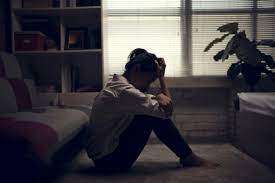The common feature of all depressive disorders is the presence of a sad, empty or irritable mood, accompanied by somatic and cognitive symptoms that significantly affect the individual’s ability to function. The differences between them consist in the duration, in the temporal distribution or in the presumed etiology.
Major Depressive Disorder
It represents the classic condition in this group of disorders.
It is characterized by distinct episodes of at least two weeks in duration (although most episodes have a considerably longer duration) that involve marked changes in affective and cognitive and in autonomic functions. It is important to pay particular attention to the distinction between sadness and physiological pain from a major
Persistent Depressive Disorder (dysthymia)
It is a more chronic form of depression, it can be diagnosed when the mood alteration lasts for at least two years in adults or one year in children.
Disruptive mood dysregulation disorder
The main feature of the disturbance caused by disrupting the action of the disruptive mood is a chronic, severe and persistent irritability. Such severe irritability has two main manifestations:
- frequent outbursts of anger that typically come in response to frustration and can be verbal or behavioral;
- persistently or chronically angry mood between severe temper tantrums
Disturbo disforico premestruale
The essential characteristics of PMD are the expression of mood lability, irritability, dysphoria and anxiety symptoms that occur repeatedly during the premenstrual phase of the cycle and undergo emission around the onset of instruction. or shortly after.
Bipolar disorder
In the DSM-5, bipolar disorder is classified separately, recognizing a specificity that places it as a bridge between depressive and psychotic disorders.
Those affected tend to alternate depressive phases followed by hypomanic or manic phases, characterized by a rather elevated mood, the feeling of omnipotence and excessive optimism.
During these phases, thoughts occur very quickly, the behavior can be hyperactive and chaotic and the energy is so great that the patient may not feel the need to sleep or eat.
Summary
Generally depressive phases tend to last longer than manic or hypomanic phases, usually lasting from a few weeks to a few months, while manic or hypomanic phases last one to two weeks.
Sometimes, in bipolar disorder, the transition from one phase to another is rapid and immediate, other times it is interspersed with a period of normal (euthymic) mood.
Comorbidity between depression and anxiety symptoms is very frequent, so much so that until the previous edition of the DSMIV there was mixed anxiety-depressive disorder. To date, the DSM-5 clinical picture no longer has this name, but it is instead possible to add the specific “with anxiety” to each type of depressive disorder.
